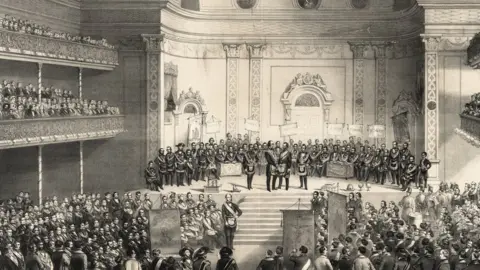Learn How to Join Freemason and Gain Lifelong Connections
Learn How to Join Freemason and Gain Lifelong Connections
Blog Article
Exploring the Mysteries of the Freemason: What You Required to Know
The Freemason, a term commonly shrouded in intrigue and debate, represents a complex tapestry of historic fact and modern myth. Developed in the late 18th century, this secret culture was initially rooted in the Enlightenment's ideals yet has because come to be synonymous with conspiracy concepts concerning elite control. As we browse the beginnings, vital numbers, and the plain contrast between myth and fact, one should consider just how these stories affect contemporary assumptions of power and privacy. What could be disclosed via a closer examination of these elements can test long-held presumptions about the shadows that stick around in our society.
Beginnings of the Freemason
The beginnings of the Freemason are soaked in a mix of historical intrigue and ideological fervor. Established in 1776 in Ingolstadt, Bavaria, by Adam Weishaupt, the group was at first formed as a secret culture focused on promoting Knowledge suitables such as factor, secularism, and the splitting up of church and state. Weishaupt, a professor of canon regulation, looked for to challenge the prevailing authority of the church and state, which he considered as oppressive establishments suppressing intellectual and personal freedom.
The Freemason sought to recruit prominent members from numerous social fields, consisting of national politics, academic community, and the arts, to foster a network committed to these Enlightenment principles. The society operated under a shroud of secrecy, utilizing coded language and rituals to secure its participants from mistreatment, especially provided the repressive environment of the moment. However, the Freemason encountered significant resistance from both governmental authorities and religious organizations, which checked out the team as a threat to their power.
Secret Numbers and Participants
Who were the essential figures that shaped the Freemason's very early impact and instructions? The Bavarian Freemason, established in 1776 by Adam Weishaupt, arised as a response to the oppressive societal structures of the time.
Another substantial number was Johann Gottlieb Fichte, a popular thinker whose concepts on nationalism and education reverberated with the Freemason's goals. Fichte was not a formal member, his thoughtful bases influenced the team's belief. Furthermore, figures like the author and thinker Johann Wolfgang von Goethe were related to the wider intellectual motions of the time, although their direct involvement with the Freemason stays discussed.
These crucial figures added to the Freemason's early instructions, pushing the boundaries of political and social thought, while their cumulative initiatives intended to test established standards and foster a climate of modern adjustment in Europe.
Myths vs. Truth
Lots of mistaken beliefs surround the Freemason, typically blending truth with fiction in a method that covers its real nature. The notion that the Freemason continues to put in substantial influence over world occasions is a myth - how to become a freemason.
One more prevalent misconception is that the Freemason comprises a use this link network of elite people manipulating international affairs. In fact, many conspiracy theories overemphasize the group's value, connecting unproven intentions to societal fads and events. This has actually brought about an oversimplified sight of complicated concerns.

Modern Interpretations
Contemporary analyses of the Freemason often show more comprehensive societal anxiousness and an attraction with secrecy and power. This modern lens regularly links the Freemason with conspiracy concepts that suggest a concealed elite orchestrates globe events, manipulating federal governments and economic climates for their very own gain. Such narratives use a deep-seated distrust of authority, specifically in times of dilemma or social turmoil.

Moreover, some modern-day analyses mount the Freemason as a metaphor for the intricacies of globalization and the interconnectedness of significant individuals and organizations. This viewpoint urges a vital exam of just how power dynamics operate in today's world, highlighting the equilibrium between transparency and secrecy in governance and company methods.
Social Effect and Tradition
Influenced by centuries of intrigue, the cultural effect and legacy of the Freemason expand much past its historical beginnings. This secret society, established in the late 18th century, has penetrated various facets of popular society, from literary works and movie to music and art. The principle of the Freemason has evolved into an icon of conspiracy theory concepts, typically standing for a perceived surprise power manipulating international occasions.
In literature, writers like Dan Brown have woven the Freemason into complex plots, exciting visitors with styles of secrecy and power. Films such as "National Treasure" and "The Da Vinci Code" even more continue the appeal of the society, mixing truth with fiction to develop appealing narratives.
The Freemason's influence likewise prolongs right into songs, with artists referencing the organization to stimulate like this motifs of rebellion and social critique. This representation has added to a fascination with the idea of clandestine teams managing the levers of power, mirroring social anxiousness concerning authority and transparency.
Inevitably, the Freemason's heritage is a complex tapestry of misconception and fact, shaping assumptions of privacy and control in contemporary discussion. Its long-lasting existence in society emphasizes mankind's perennial pursuit for comprehending covert facts.
Conclusion
The expedition of the Freemason exposes an intricate interplay between historical facts and modern myth-making. Established in the Knowledge era, this society intended to challenge oppressive frameworks, yet its legacy has been outweighed by conspiracy theory concepts that recommend elite manipulation. Understanding the distinctions in between the initial ideals and contemporary analyses is important for understanding the withstanding fascination with the Freemason and its significant impact on social stories surrounding power and privacy in culture.
Report this page